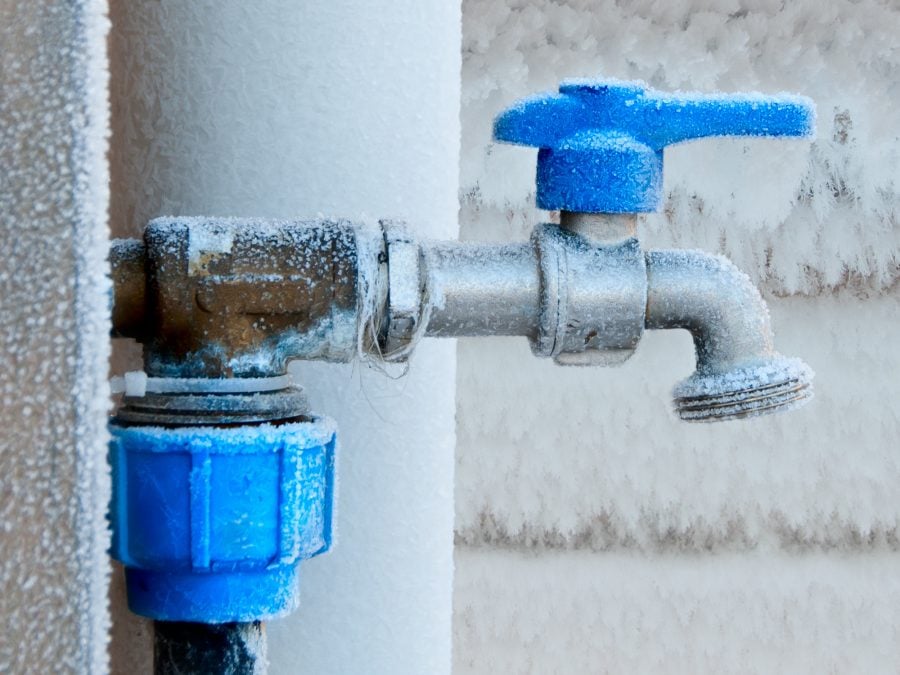Ways to Safeguard Pipes from Freezing: Specialist Tips
Ways to Safeguard Pipes from Freezing: Specialist Tips
Blog Article
This post below in relation to Prevent Frozen Pipes is exceedingly insightful. Read on and draw your own final thoughts.

Cold weather can wreak havoc on your plumbing, specifically by freezing pipelines. Right here's how to avoid it from taking place and what to do if it does.
Intro
As temperature levels decrease, the danger of frozen pipelines rises, potentially leading to expensive repairs and water damages. Recognizing how to avoid icy pipes is crucial for homeowners in chilly environments.
Recognizing Icy Pipes
What triggers pipes to freeze?
Pipes ice up when revealed to temperatures listed below 32 ° F (0 ° C) for prolonged durations. As water inside the pipelines ices up, it increases, taxing the pipeline wall surfaces and potentially causing them to break.
Threats and problems
Frozen pipes can result in supply of water interruptions, home damage, and costly fixings. Ruptured pipes can flooding homes and create considerable structural damage.
Indicators of Frozen Pipeline
Identifying icy pipes early can prevent them from breaking.
Exactly how to identify icy pipes
Search for decreased water flow from faucets, uncommon smells or noises from pipes, and visible frost on revealed pipelines.
Avoidance Tips
Protecting susceptible pipes
Cover pipelines in insulation sleeves or use warm tape to shield them from freezing temperature levels. Concentrate on pipes in unheated or exterior areas of the home.
Home heating techniques
Maintain interior areas effectively heated, specifically areas with pipes. Open up cupboard doors to allow warm air to circulate around pipes under sinks.
Shielding Outside Pipes
Garden hoses and outside faucets
Detach and drain pipes yard hoses prior to winter months. Install frost-proof spigots or cover outdoor taps with protected caps.
What to Do If Your Pipes Freeze
Immediate actions to take
If you believe frozen pipelines, maintain faucets open up to eliminate pressure as the ice thaws. Utilize a hairdryer or towels soaked in warm water to thaw pipes slowly.
Long-Term Solutions
Architectural adjustments
Take into consideration rerouting pipelines far from outside walls or unheated areas. Include extra insulation to attics, cellars, and crawl spaces.
Updating insulation
Buy high-quality insulation for pipelines, attics, and wall surfaces. Proper insulation aids preserve constant temperature levels and decreases the threat of icy pipes.
Conclusion
Avoiding frozen pipelines needs aggressive measures and fast responses. By comprehending the causes, indicators, and safety nets, house owners can safeguard their pipes throughout cold weather.
6 Proven Ways to Prevent Frozen Pipes and Protect Your Home
Disconnect and Drain Garden Hoses
Before winter arrives, start by disconnecting your garden hoses and draining any remaining water. Close the shut-off valves that supply outdoor hose bibs and leave the outdoor faucet open to allow any residual water to drain. For extra protection, consider using faucet covers throughout the colder months. It’s also important to drain water from any sprinkler supply lines following the manufacturer’s directions.
Insulate Exposed Pipes
Insulating your pipes is an effective way to prevent freezing. Pipe insulation is readily available at home improvement stores and is relatively inexpensive. Pay close attention to pipes in unheated areas such as the attic, basement, crawl spaces, or garage. Apply foam insulation generously to create a buffer against the cold. You can also wrap your pipes in heat tape or thermostat-controlled heat cables for added warmth.
Seal Air Leaks
Inspect your home for any cracks or openings that could let in cold air. Seal any holes around the piping in interior or exterior walls, as well as the sill plates where your home rests on its foundation. Additionally, make sure to keep your garage door closed unless you’re entering or exiting. Leaving it open creates a significant air leak that can lead to frozen pipes.
Allow Warm Air Circulation
During cold snaps, it’s essential to allow warm air to circulate evenly throughout your home. Leave interior doors ajar to promote better airflow. Open kitchen and bathroom cabinets to help distribute heat consistently around the rooms. If you have small children or pets, be sure to remove any household chemicals or potentially harmful cleaners from open cabinets for safety.
Let Faucets Drip
A small trickle of water can make a big difference in preventing ice formation inside your pipes. When temperatures drop significantly, start a drip of water from all faucets served by exposed pipes. This continuous flow helps prevent the water from freezing. Additionally, running a few faucets slightly can relieve pressure inside the pipes, reducing the chances of a rupture if the water inside does freeze.
https://choateshvac.com/6-proven-ways-to-prevent-frozen-pipes-and-protect-your-home/
:strip_icc()/snow-outdoor-faucet-pipes-4af65d1e5e904fb1aa7bf74071fe5d89.jpg)
We were made aware of that report about Winter Plumbing Precautions: Preventing Frozen Pipes from someone on our other web blog. So long as you appreciated our post please make sure you remember to share it. Thanks so much for taking the time to read it.
Book Now! Report this page